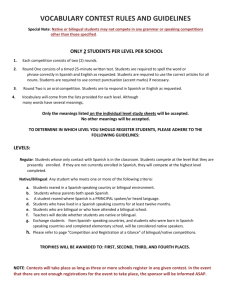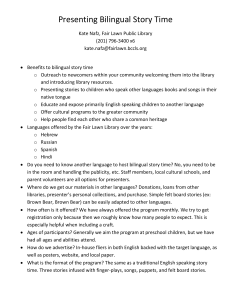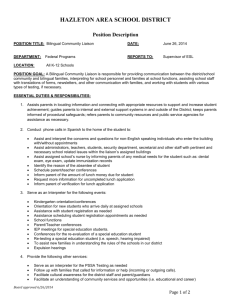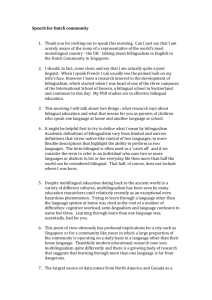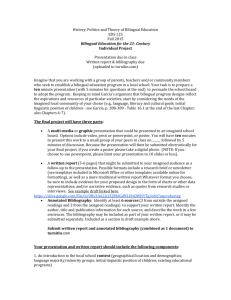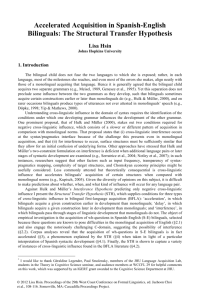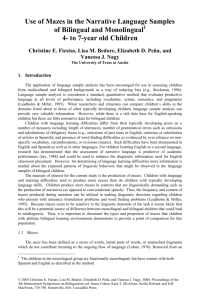Article__2_ESOL
advertisement
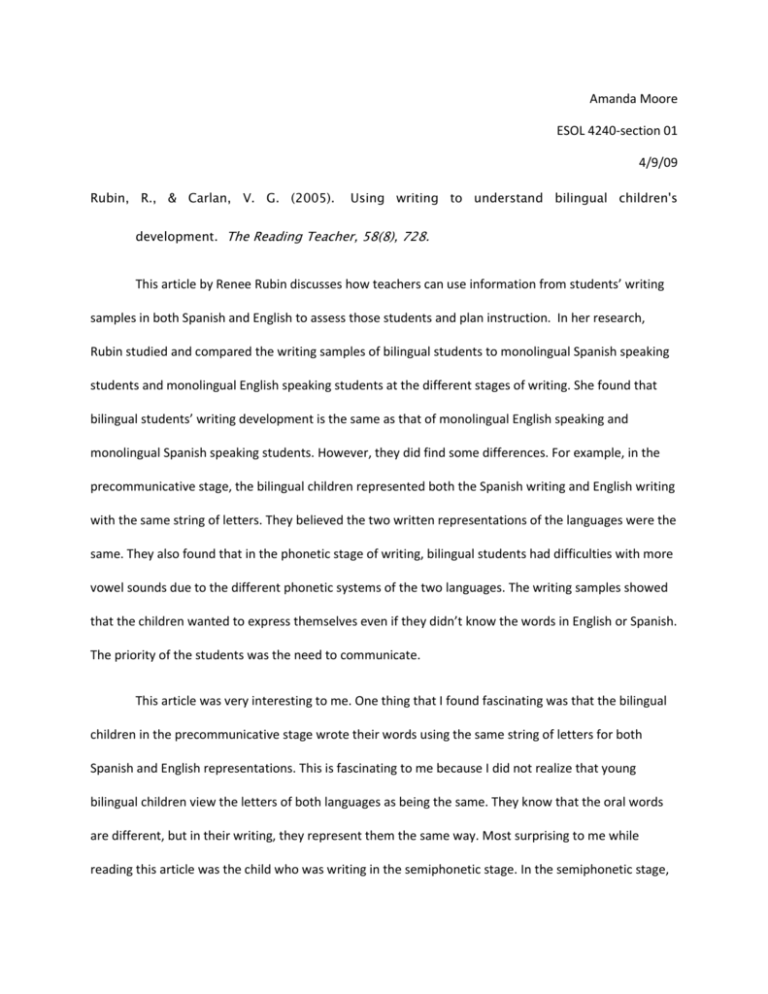
Amanda Moore ESOL 4240-section 01 4/9/09 Rubin, R., & Carlan, V. G. (2005). Using writing to understand bilingual children's development. The Reading Teacher, 58(8), 728. This article by Renee Rubin discusses how teachers can use information from students’ writing samples in both Spanish and English to assess those students and plan instruction. In her research, Rubin studied and compared the writing samples of bilingual students to monolingual Spanish speaking students and monolingual English speaking students at the different stages of writing. She found that bilingual students’ writing development is the same as that of monolingual English speaking and monolingual Spanish speaking students. However, they did find some differences. For example, in the precommunicative stage, the bilingual children represented both the Spanish writing and English writing with the same string of letters. They believed the two written representations of the languages were the same. They also found that in the phonetic stage of writing, bilingual students had difficulties with more vowel sounds due to the different phonetic systems of the two languages. The writing samples showed that the children wanted to express themselves even if they didn’t know the words in English or Spanish. The priority of the students was the need to communicate. This article was very interesting to me. One thing that I found fascinating was that the bilingual children in the precommunicative stage wrote their words using the same string of letters for both Spanish and English representations. This is fascinating to me because I did not realize that young bilingual children view the letters of both languages as being the same. They know that the oral words are different, but in their writing, they represent them the same way. Most surprising to me while reading this article was the child who was writing in the semiphonetic stage. In the semiphonetic stage, bilingual children will write the word the same for English and Spanish, but pronounce the words in their respective languages. For example, the child in the article wrote the word car as “cro” for both English and Spanish. When asked to pronounce the word in Spanish, the child responded “carro” and said the word “car” for the English pronunciation. Before reading this article, I did not realize that bilingual children wrote words representing both languages as the same. This article can help me in the future when working with ELL students because it gives insight on why a child may be struggling to learn to write the correct phonological sounds in words. After reading this article, I now understand that it is important to emphasize meaning in writing instruction when working with both monolingual and bilingual students. I will also be able to understand that a child may be in one stage of writing in their first language and a different stage of writing in the second language. This will help me understand why the child may be having difficulty in their writing. Something else I would like to know about this subject are some strategies that would help bilingual children better understand the language system they are trying to learn. I think that by knowing strategies to properly teach the children the new language, the teacher can better help the students learn the intended language. I would also like to know what types of differences would be found in someone who speaks French or German as their first language. This article reflects my understanding of Standard III in that I am able to understand that children learning a second language may implement aspects of their first language when writing in their second language. From this article, I have learned that some children may use codeswitching when learning their second language. Some children may write the word the same way for both English and Spanish, but they know how to pronounce the word correctly for both languages. Also, children who are bilingual generally go through the same writing stages of writing development as monolingual children. This is important to know when working the students, because as a teacher and knowing each of the stages of writing, I can help guide the student in their writing and find ways to help them master each stage of their second language development.
